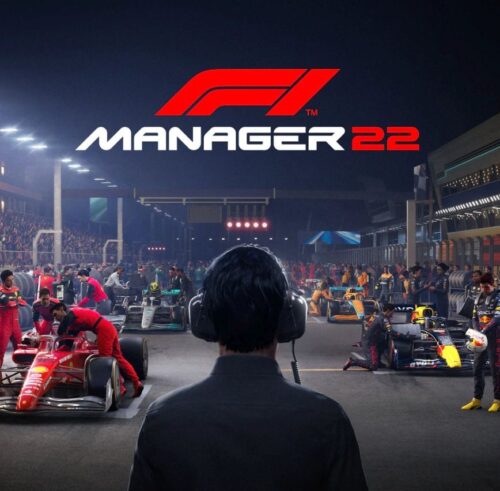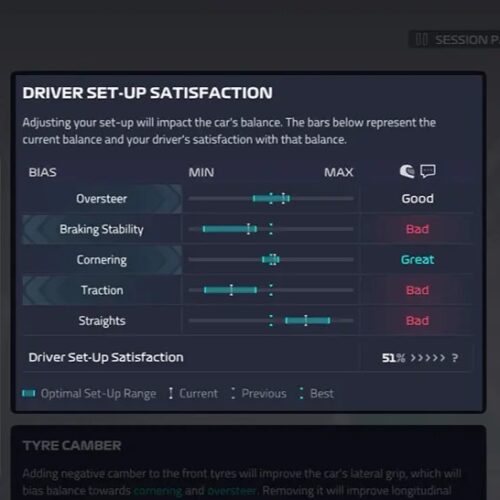
Having the right setup can make or break a race in F1 Manager 2023. Follow this guide to master car setups and give your drivers an edge.
How to Get the Perfect Setup in F1 Manager 2023: A Comprehensive Guide
Experimenting for the Perfect Setup
To create the perfect setup for every track and driver, we’ve conducted extensive experiments in F1 Manager 2023. The key is to utilize the practice sessions efficiently and effectively. During a regular race weekend, you have three practice sessions to refine your setups, but in sprint weekends, you only get one practice session.
Unlike in F1 23, there’s no meta to rely on, which means you start with a blank canvas for every track. This makes each setup unique, tailored to both the track and the driver.
Cracking the Setup Puzzle
F1 Manager 2023 setups are divided into five crucial categories. Each category features an ideal range represented by a blue bar, which narrows as your driver gains setup knowledge.
- Oversteer
- Braking stability
- Cornering
- Traction
- Straights

To fine-tune the balance of these categories, you’ll work with five sliders. Each slider impacts the setup differently, turning the setup process into a challenging yet rewarding mini-game.
- Front wing angle
- Rear wing angle
- Anti-roll distribution
- Tyre camber
- Toe-out.

Below is a table that illustrates the categories influenced by each slider:
| Setup Area | Affects |
| Front Wing Angle | Oversteer, Braking Stability, Cornering, Traction, Straights |
| Rear Wing Angle | Oversteer, Braking Stability, Cornering, Traction, Straights |
| Anti-Roll Distribution | Oversteer, Braking Stability, Cornering, Traction |
| Tyre Camber | Oversteer, Braking Stability, Cornering, Traction |
| Toe-Out | Braking Stability, Cornering |
The Driver’s Feedback and Confidence
Your driver’s feedback is a pivotal element in evaluating your setup’s effectiveness. To obtain valuable feedback, send your driver out for laps during practice sessions with a fuel load for approximately 20 laps and hard tires. Monitoring your driver’s performance during these laps will provide essential insights into the setup’s success.

Educated Guesses and Skillful Balancing
Certain tracks may allow for educated guesses in setup decisions. For instance, Monaco requires considerable wing, while high-speed circuits like Monza demand minimal wing adjustments. However, most tracks require meticulous balancing, testing your skills as an F1 Manager.
Fine-Tuning and Perfecting
As your driver accumulates laps, their optimum range for each setup category will narrow, indicating areas that require tweaking. Fine-tuning one aspect without affecting others can be challenging but is essential for achieving an optimal setup. Adjusting anti-roll distribution for improved traction might necessitate minor front-wing tweaks to maintain the perfect oversteer range.
The ultimate goal is to reach a setup value of 75% or higher, indicating a good setup. Even after hitting this benchmark, implementing minor tweaks can further enhance your car’s performance. Remember, significant changes take longer to implement, so keep adjustments smaller if possible.
Why Setups Matter
In F1 Manager 2023, driver confidence is a game-changer. It influences various aspects of a race, from successful overtakes to avoiding crashes. A well-tuned setup boosts your driver’s confidence, giving them a competitive edge on the track. Leaving your setups to AI management might lead to disappointing results, so investing time and effort into crafting the ideal setup can propel your driver to the forefront of the F1 Manager 2023 grid.
In conclusion, taking the time to perfect your car’s setup is essential for achieving victory in F1 Manager 2023. Letting the AI manage setups may lead to disappointing results. With the right setup and confident driver, you’ll be well on your way to dominating the competition in F1 Manager 2023!
